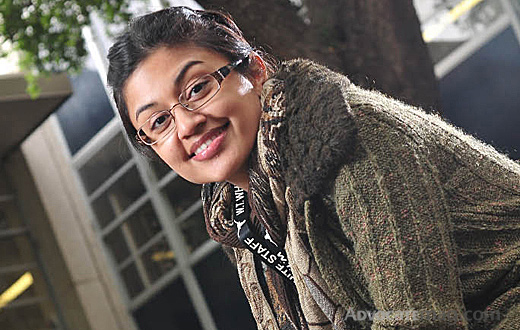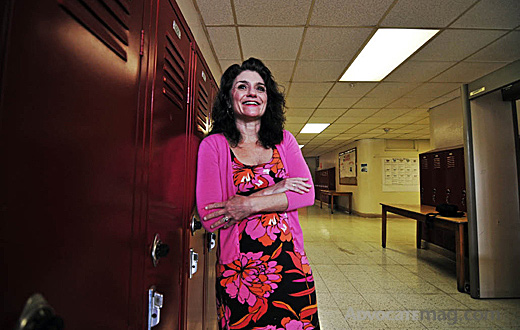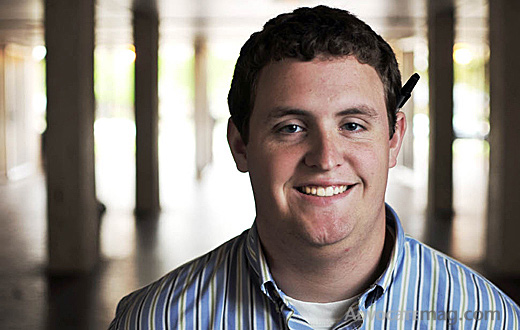High school is a time of memories, growth and learning, but most of us, if we had the opportunity, would never return to our former high schools. After graduating, we leave high school in the past and dive head first into the future.
However, several alumni have traded in their backpacks for briefcases to return to their alma maters as faculty. Read about what motivated these former students to reenter the classroom in a very different role.
Nadia Khan-Roberts
Spanish teacher
W.T. White High School, class of 1998
THE JOURNEY BACK: Khan-Roberts attended Stephen F. Austin, where she majored in Spanish and French. She knew she wanted to teach, but never thought she would return to W.T. White.
She had taught in Austin and Plano and had recently married when she heard about an open Spanish position at W.T. White.
“It was an opportunity that fell into my lap,” she says.
Khan-Roberts first reaction was laughter.
“I laughed — ‘Ha ha, I’m not going back to teach at the school I graduated from’ — and then I thought, ‘Oh, that might be kind of fun,’” she says. “I went, I interviewed, I got the job, and walking into the building, it was like putting on an old, comfortable pair of shoes.”
WHAT’S CHANGED: Khan-Roberts says the racial makeup of the school has changed. When she was a student, the number of white and Hispanic students was equal. Now the school is 70 percent Hispanic. She also says the student body is larger.
“We’re busting at the seams,” she says.
The school is also more academically rigorous than in the past, she says.
“Gone are the days of teacher goes and sits at the desk and gives all the kids a worksheet,” she says.
GIVING BACK: Khan-Roberts sees education as an investment.
“I spent four years here, and they invested in me. And here I am giving back. And now I’m investing in my students, and I hope they give back.
“They don’t have to give back at White. They can give back at the city level, at the state level — heck, they can go to Argentina, go to Mexico. Use their Spanish to go fix Mexico,” she says.
ATTENTION GRABBER: Khan-Roberts says she doesn’t initially tell her students she attended W.T. White. She likes to wait until the students get to know her and respect her. Then she uses it as a lecturing point.
“I’ll say, ‘You know when I was in high school, and I was in this school, in this building, I never used to hear kids walking around saying the n-word or the f-word.’
“And they’re like ‘Wait. What, what, what?’
“I was like ‘Yeah, yeah, I went to this school!’” she says.
ALL IN THE FAMILY: Khan-Roberts spends eight to 10 hours a day at school. “I feel like I’m helping my family. This is my second family,” she says.
She hopes one day her two children will be able to attend W.T. White.
“In 10 years, I hope this school will still be flourishing,” she says.
Georgann Rosamond
English teacher
Hillcrest High School, class of 1971
WORKING STUDENT: During her senior year of high school, Rosamond had completed all of her credits, so she participated in a vocational office education program.
“I left [school] by 11:30, and I worked in a law firm from noon until 5, five days a week, so that kept me pretty busy,” she says.
Still, she says she was able to enjoy her senior year.
THE JOURNEY BACK: After graduating from UTD, Rosamond completed her student teaching at Lake Highlands High School and was offered a job there.
She taught at the school five years before getting married and deciding to stay home with her first child. Rosamond stayed home for 12 years but continued to be involved in her children’s education, and began substituting for English teachers at W.T. White.
She was offered a position but says she wasn’t quite ready.
After her divorce, she says, “I went back into the fire. I went back into teaching.”
She taught at the first charter school in Texas for a year, then worked with the Junior Achievement program and taught for six years at the elementary level.
“I have approximately 21 years experience [in teaching], but it’s broken up,” she says.
As ESL teaching jobs at the elementary level began to phase out, Rosamond interviewed for secondary teaching positions. She attended an education fair and learned that Hillcrest was looking for teachers.
“It was really just by chance,” she says.
This is her seventh year at Hillcrest.
WHAT’S DIFFERENT: When Rosamond attended Hillcrest, the school was populated only with 10th- through 12th-graders. At that time, girls weren’t allowed to wear jeans or pants to school.
“Everybody wore hose and girdles and dresses or skirts,” she says.
She also remembers the cafeteria food being homemade.
“My mother would pack me a lunch or I’d make my lunch every day, but I would rather eat the cafeteria food because it was so good. It was all homemade rolls, homemade pies,” she says.
Rosamond says classes were relatively large when she was a student, and she took a typing class that pre-dated the era of computers.
“It was just a very different world,” she says.
RELATING TO STUDENTS: Rosamond tells her students she attended Hillcrest when it comes up in conversation. She says the students always want to know what year she graduated.
“I feel like I relate to my students because I grew up in Dallas, like they are, even though it has changed a lot,” she says.
Rosamond says she grew up in the “political days” and graduated a year before the schools were integrated in 1972.
“I really enjoy teaching, and I feel I get my message across,” she says. “[The students] may think I’m a shrew at first, but they come to realize that they’re learning something.”
Ben Meyer
Geometry teacher, football coach and assistant girls soccer coach
W.T. White High School, class of 2006
THE JOURNEY BACK: Meyer attended Yale University and studied economics and mathematics. “I knew I wanted to teach for a little bit after college,” he says. “I wanted to come back and work at Dallas ISD or at least in an urban school district.” After enrolling in the Dallas ISD alternative certification program, he applied for positions at several Dallas high schools. W.T. White was one of the few high schools with jobs available.
“I just kind of jumped on that,” he says. “It’s fun coming back and teaching people who grew up in the same area you did.”
WHAT’S CHANGED: Not much in five years, Meyer says. “Maybe half the teachers I had are still here, and the other half have retired or gone to different schools. The student body is pretty much the same,” he says.
WORKING WITH FORMER TEACHERS: “It’s a little weird because I’m teaching with some of the teachers who taught me,” he says. “It’s not as weird as I expected because it’s a totally different group of students. I’m not teaching people I actually know.”
STUDENT REACTIONS: “They’re kind of taken aback when I say, a, that I went to school here, and b, that someone from here ended up going to Yale,” he says. “It’s kind of neat for them. It’s good not only for my students but also for the kids I coach.”
FUTURE OUTLOOK: Meyer began as a freshmen football coach and then was moved up to varsity. Still, he remains close to the freshmen football players. “It would be nice, because I’m really close with those freshmen, to see them go through high school and hopefully succeed and go to college. That’s kind of what I’m shooting for.”









